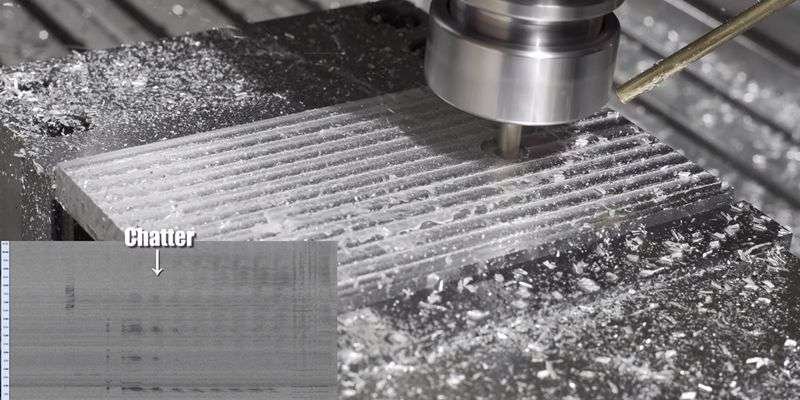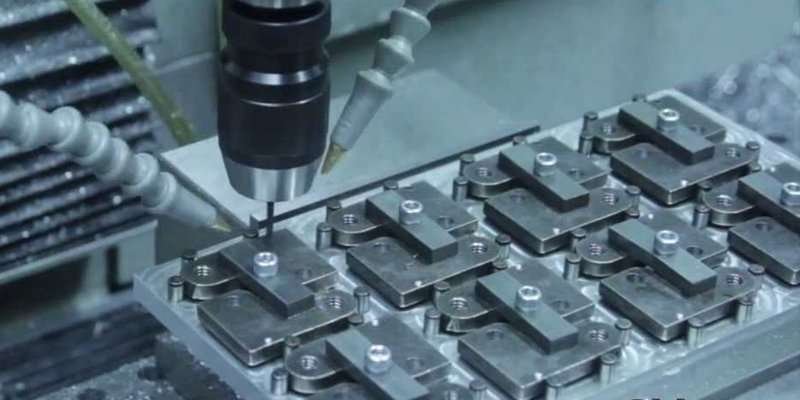CNC machining remains one of the most affordable options for on-demand production. Its value for machining materials like plastics, metals, composite materials, and others is undisputed. However, the exact cost of a CNC machining process often depends on several factors, including the type of machine used, the type of material machined, and the machine shop.
In this article, we’ll discuss the factors that influence CNC machining costs and useful tips on how to cut down CNC costs when machining.
Table of Contents
ToggleWhat Factors Determine CNC Machining Cost?
To calculate the cost of CNC machining, manufacturers consider the following factors. Hence, when outsourcing your machining project, here are price-influencing factors that influence CNC machining costs.
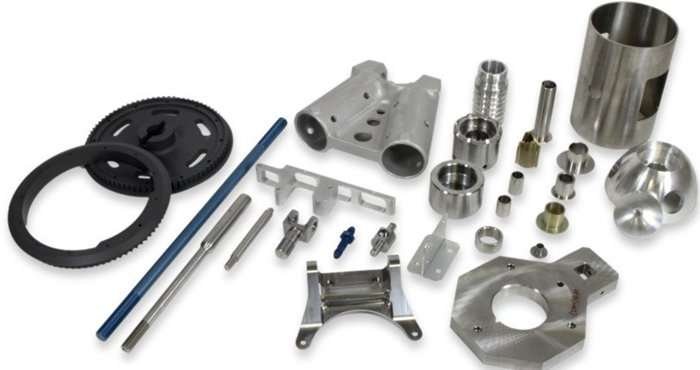
Machining Material
When calculating the cost of CNC machining, machinists must consider the material used seriously. It is important to note that CNC machining is a subtractive process, and as such, the finished product usually has less material than the raw block purchased. Metals and plastics are the two CNC machining materials most frequently utilized in CNC machining. Let’s examine both of them more closely:
Plastics
Plastics are less expensive for CNC machining since their average cost for bulk materials is lower, and they require less time to machine because of their reduced hardness. Plastics like ABS, PMMA, and PC cost about the same in bulk as certain metals, but they could be slightly more expensive per block. Plastics like PEEK are costly and only be utilized under challenging situations.
Metals
Metals like Brass C360, Stainless Steel 303, and Aluminum 6061 are frequently used in CNC machining. However, aluminum 6061 is the most popular choice among machinists due to its low cost and excellent machinability. In addition, titanium, magnesium, and some precious metals provide specific properties, so they are at a higher price.
Composite Material
Composite materials are difficult to work with when it comes to CNC machining. These materials include fiberglass, carbon fiber, silicon carbide, graphite, alumina, mullite, etc. They are arduous, abrasive, and hard on tools. This difficulty experienced by machinists when working with composite materials increases its costs. Also, since the material is hard on tools, it often results in tool wear, thus increasing the cost of production.
Labor Cost
You don’t have to pay for many staff employees because the CNC machining process involves a lot of automation. Nonetheless, here are the major labor costs machinists incur during the CNC machining process.

Machine Setup
For a custom CNC task, the machinist takes his time setting up the machine to ensure that everything is done in a way that produces a wonderful outcome. The amount of workpieces to be manufactured determines how much the setup will cost. However, the price per part is lower because the cost is distributed over more components when manufacturing bulk parts.
Machine Programming
Given that design and digitization expenses are involved, this portion of labor costs is the most expensive. There are three levels here. Firstly, the designer, as you must hire a designer to create a CAD file for your product. The only way to avoid this cost is to handle the design yourself. Secondly, the manufacturing engineer’s job is to verify your design’s reproducibility and offer recommendations to improve it.
Then, lastly, the programmer transforms the CAD file into a CAM file so the CNC machine can understand the design. The programming cost is quite expensive since all this knowledge and expertise is costly.
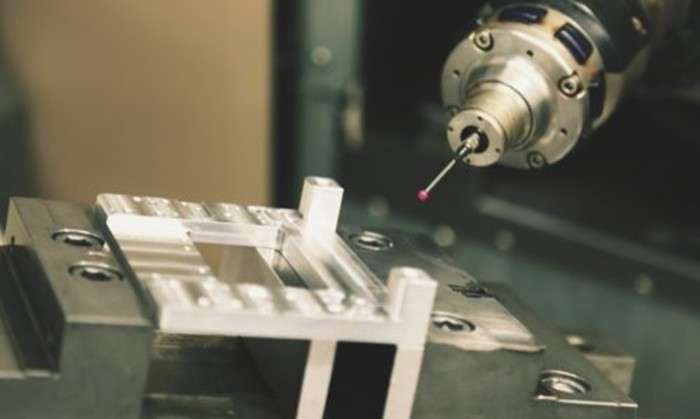
Inspection and Packaging
Costs for packing and inspection are included in labor costs. Some machining parts that require tight tolerance will require machine inspection. Besides, there is custom packaging for your product, which increases your CNC machining cost.
Hence, it’s essential to manage and optimize these overhead costs to keep costs under control and keep CNC machining competitive.
Geometry and Size of Parts
The intricacy of the machined part or component heavily influences the cost. Complex geometries, large-sized parts, intricate features, and tight tolerances in machining frequently call for more sophisticated machining processes, specialized tools, and extended machining times. Due to the increased precision and skill needed to make such complex components, these factors raise the overall cost.
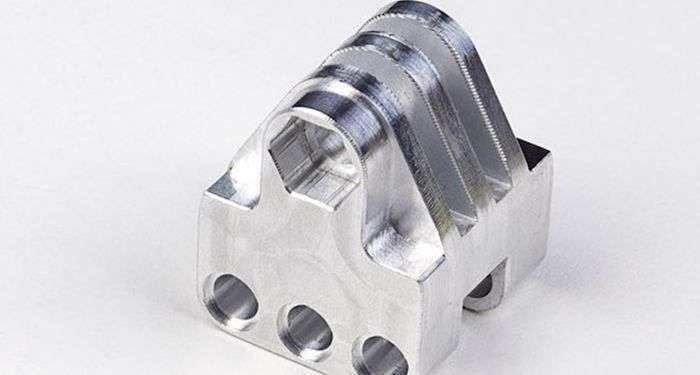
Additional Costs
Additional costs here include the cost of purchasing specialized tools. For instance, the CNC machine shop might need specialized toolbits for some unique CNC fabrications.
Surface finishes are another factor that could influence the cost of machining. The look and resistance to abrasion of CNC machined items are improved by surface treatments. Despite their benefits, they raise the cost of machining.
How to Calculate CNC Machining Costs?
How much does machining cost? The price of CNC machining is not always straightforward. The part’s intricacy will determine the precise cost of a CNC machinist’s job. Machine tools used for various procedures will have varying hourly rates.
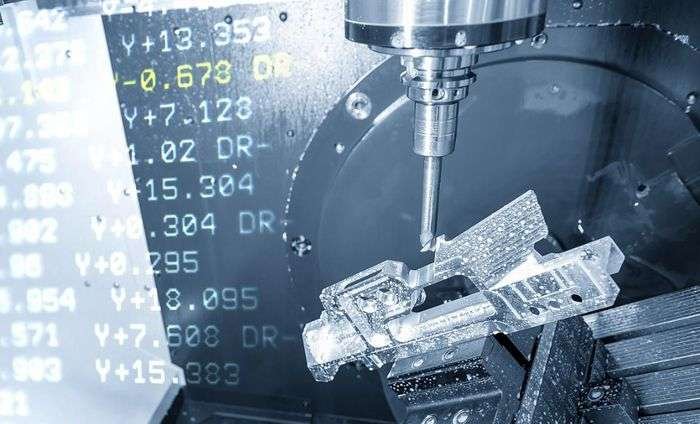
The CNC machine cost and the anticipated annual usage of the machine (which, on average, is 5000 hours) are two elements that affect machining costs. The machine shop rates, sometimes referred to as the machining cost per hour, are calculated by the machinists by dividing the cost of the machine by the number of hours it will be in use annually.
To calculate the cost of a CNC machining job, you must know the cost of the machines per hour. You can easily accomplish this by multiplying the number of hours the machines will operate each month by the monthly electricity costs. Then, total up all the expenses for consumables related to your project. These consist of work-holding equipment, lubricating oil, and coolant. You will then have the project’s net cost.
Tips to Save CNC Machining Cost
There are some primary ways to reduce the cost of CNC machining and improve the cost calculation. Here are some tips to lower the CNC machining price of CNC-machined items.
Choose the Right Material
Material selection significantly affects CNC machining prices. As a result, one should thoroughly examine several sources before making a choice.
Ensure the desired material has the qualities you need for your application at the lowest possible cost. However, it is best not to skimp on the quality of your materials. Furthermore, not all material characteristics are necessary for your application. Selecting a heat-resistant material becomes unnecessary if you want to manufacture a product that would experience minimal heat exposure.
Also, to reduce machining time and complexity, remember that material machinability is a key factor. Since it influences a manufacturing process’s hourly rate, choosing a material with high machinability is best. Most aluminum is a prime example of such a material. When practical and available, you should pick these kinds of materials.
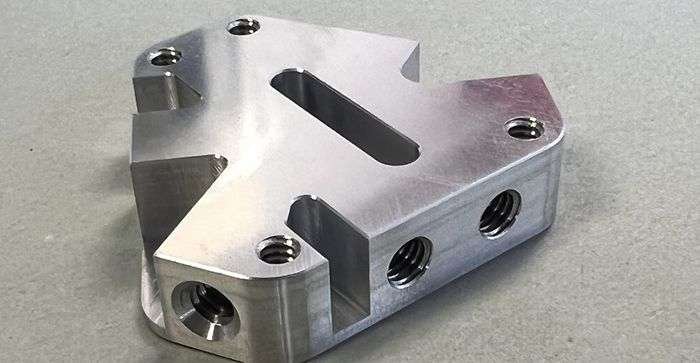
Reduce the Number of Finishes
As was already noted, the cost of CNC machining is increased by finishing processes. However, you should note that CNC machining operations’ surface finishes are done excellently. This kind of finish is sufficient for some purposes. As a result, you should choose a machined finish whenever possible because applying different finishes tends to be more expensive.
Go For Thicker Walls
We recommend minimizing the use of thin walls in a component’s design to achieve the best performance. Thin walls are delicate and frequently require several passes with shallower cuts. These shallow depths aid in preventing cracks or mistakes in the fragile walls. As a result, making them requires extra time.
Extremely thin walls frequently have a high likelihood of vibrating. As a result, it is more complex and time-consuming to produce such parts to the required tolerances. As a result, machining takes longer, which raises overall machining costs.
The necessity of locating threads and holes close to component edges is one of the frequent justifications for thin walls. So, we advise that you position these structures thoughtfully. More stable and economical machining will result from designing thicker walls. Plastic walls must be at least 1.5 millimeters thick, and metal components’ walls must be at least 0.8 millimeters thick.
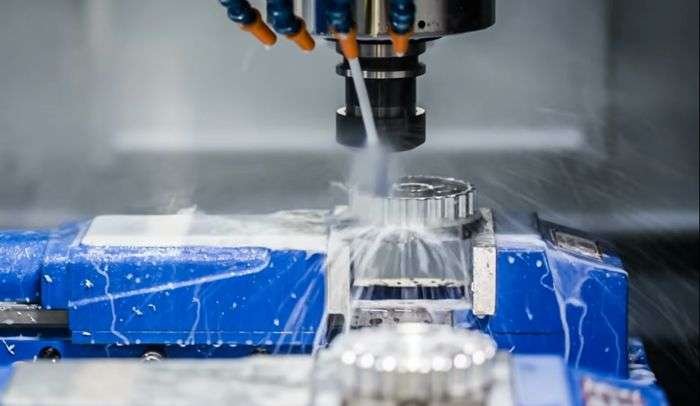
Avoiding Designing Deep Cavities
Removing a lot of materials is required to create deep voids. As a result, these cavities take time to produce. Besides, they could result in challenges such as hanging, tool deflection, and breakage, so specific tooling is needed.
Deep cavities must be correctly machined by gradually stepping down the end mill, which might take time. To achieve the optimum outcomes, cavities should have a depth four times their width.
For instance, a hollow 10 millimeters broad shouldn’t have a depth greater than 40 millimeters.
Make Bulk Orders
The economic scale also applies to CNC machining. If production volume rises, the total expense of a CNC machining process will fall rapidly.
Here is an attempt to put this cost-saving concept in a more favorable context.
Let’s say we have a $40 single-unit component. If 10 parts are produced, the price per unit of this part will be reduced to around $12.5.
Likewise, with 100 parts, the price per unit will reduce to roughly $8.79. This means that increasing manufacturing orders from 1 to 100 might result in a cost-per-unit part reduction of more than 60%. The drops take place because every process variable stays constant. In other words, the CAD design is the same whether you are manufacturing ten, fifty, or one hundred units of a component.
You won’t have to select a separate machine configuration for a different set of parts at the same time. The reason is that throughout the entire production process, the same settings are chosen. As a result, you ought to consider placing larger orders to benefit from this scale-up economy.
Methods to Find Cost-Effective CNC Machining Services
Precision and efficiency are the pillars of success in modern production. Services for CNC machining have been a game-changer for sectors that need complex and precise metal components. However, with this sophistication comes an increase in production cost. Nonetheless, here are methods to find cost-effective CNC machining services.

Compare Prices
CNC machining services vary from one CNC machining shop to the other; some are more expensive than others. To ensure you get the best deal, looking into and contrasting the CNC costs of various CNC machining service suppliers is best. You can use this to find the greatest offer for your budget.
Compare Manufacturing Capabilities
Bulk orders reduce manufacturing costs considerably, but not all machining shops can fulfill them. So, when sourcing for CNC machining services, ensure you compare their manufacturing capabilities, as it goes a long way to determine how cost-effective your CNC machining becomes.
Also, take into consideration the CNC machines utilized by the machining company. Do note that if the machining service company would have to acquire additional tooling to fulfill your order, it could increase machining costs.
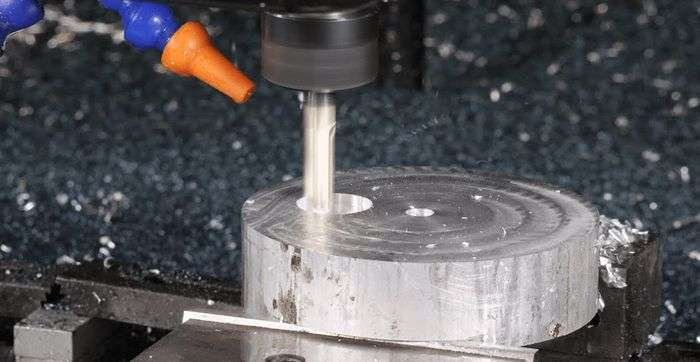
Reduce Your CNC Machining Costs with XinCheng
XinCheng is an expert at CNC machining and is committed to offering affordable prototyping and machining services. We provide many sectors with high-quality CNC machining services at incredible prices and delivery. Our team and engineers are constantly available to receive your order and process it as quickly as we can, decreasing time to market.
No matter the size of your order, whether for mass production or prototyping, or what your design requirements are, XinCheng offers 3-axis, 4-axis, and 5-axis CNC machining services in addition to qualified experts to ensure your order complies with industry standards. So get in touch with us immediately so we can work on your projects.
Conclusion
Making more educated decisions and possibly saving money is possible when one knows the variables influencing the cost of CNC machining. We also included some helpful advice that would help you cut production expenses significantly while maintaining the highest possible level of product quality.
You can ensure that your project stays on schedule and under budget without sacrificing quality by considering the factors we’ve covered and working with a reputable CNC machining supplier like XinCheng.
FAQs
Is CNC machining cheaper than 3D printing?
CNC machining is typically more expensive than 3D Printing for smaller quantities of items. However, when the number of workpieces rises, the price of CNC machining falls and approaches that of 3D Printing.
How much does it cost to run a CNC mill per hour?
In common, 3-axis CNC machining typically costs $40 per hour. The hourly wage for CNC milling machine operators can be between $30 and $50. However, these costs will vary depending on the area.
Are CNC machines a good investment?
Although CNC machines can be pricey, they are a terrific investment because of all you can accomplish with them. Even though professional-grade CNC machines may be out of your personal or professional budget.

